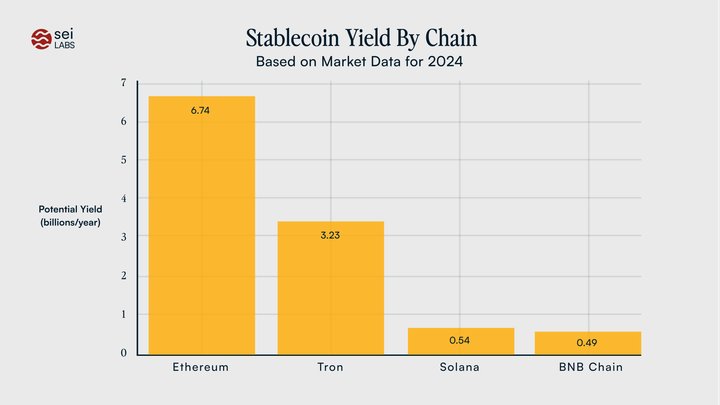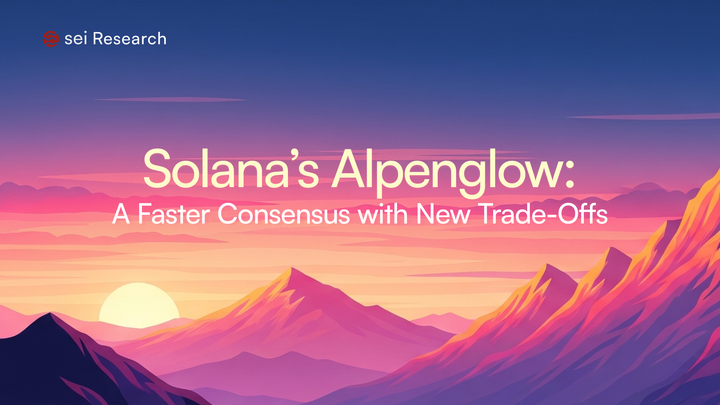Sei Giga: Achieving 5 Gigagas with Autobahn Consensus
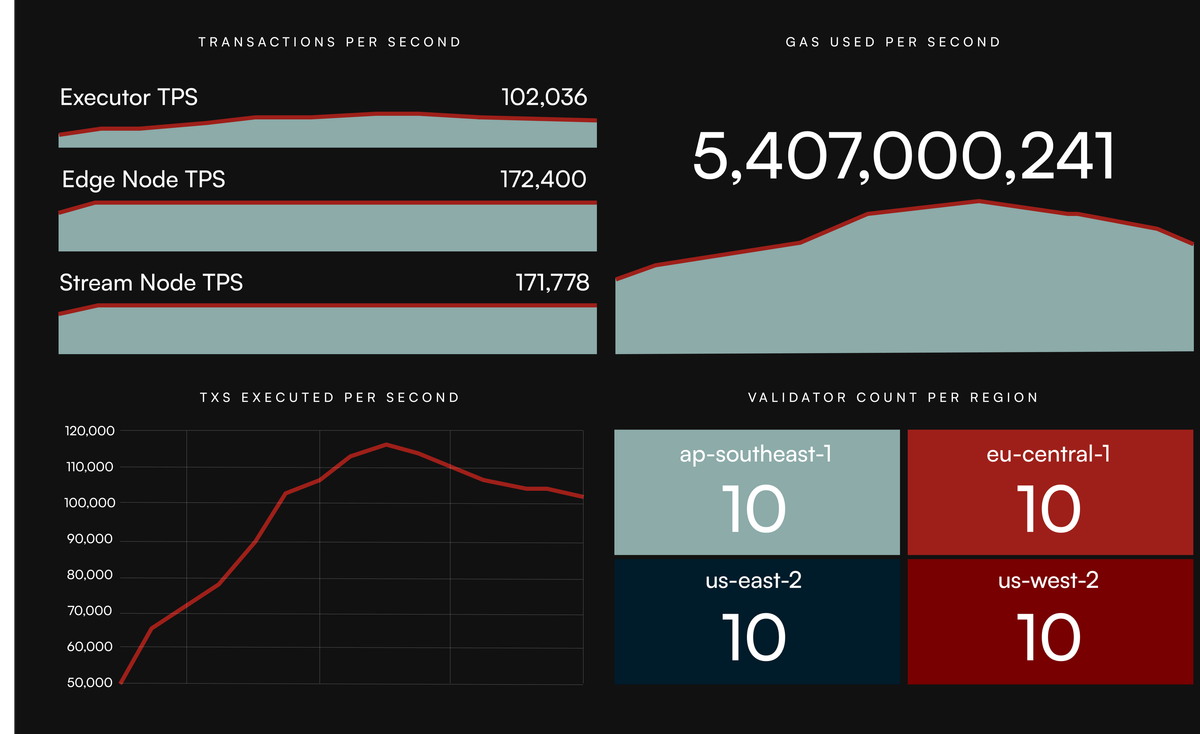
The Sei Labs team were able to get 5 gigagas throughput in a 40-node network distributed across 4 regions in an internal devnet.
This is a significant step forward in our mission to scale blockchain infrastructure for the next billion users.
This post is the first in a series diving deep into Sei Protocol Giga's consensus mechanism. We'll focus on two key aspects: our recent benchmark results and an in-depth look at Autobahn, the consensus protocol powering these achievements. Future posts will explore implementation details, additional improvements, and comparative analyses with other protocols.
Benchmark Results
Test Environment
Our devnet test was conducted with:
- 40 validator nodes
- Distribution across 4 geographic regions (Singapore, Germany, Ohio, and Oregon)
- Network conditions mimicking real-world latency and bandwidth constraints
- Comprehensive transaction workload simulating various operation types
Performance Metrics
The test network demonstrated:
- Throughput: 5 Gigagas sustained processing capacity
- Finality: ~700ms
- Network Resilience: Maintained performance stability across regional distribution
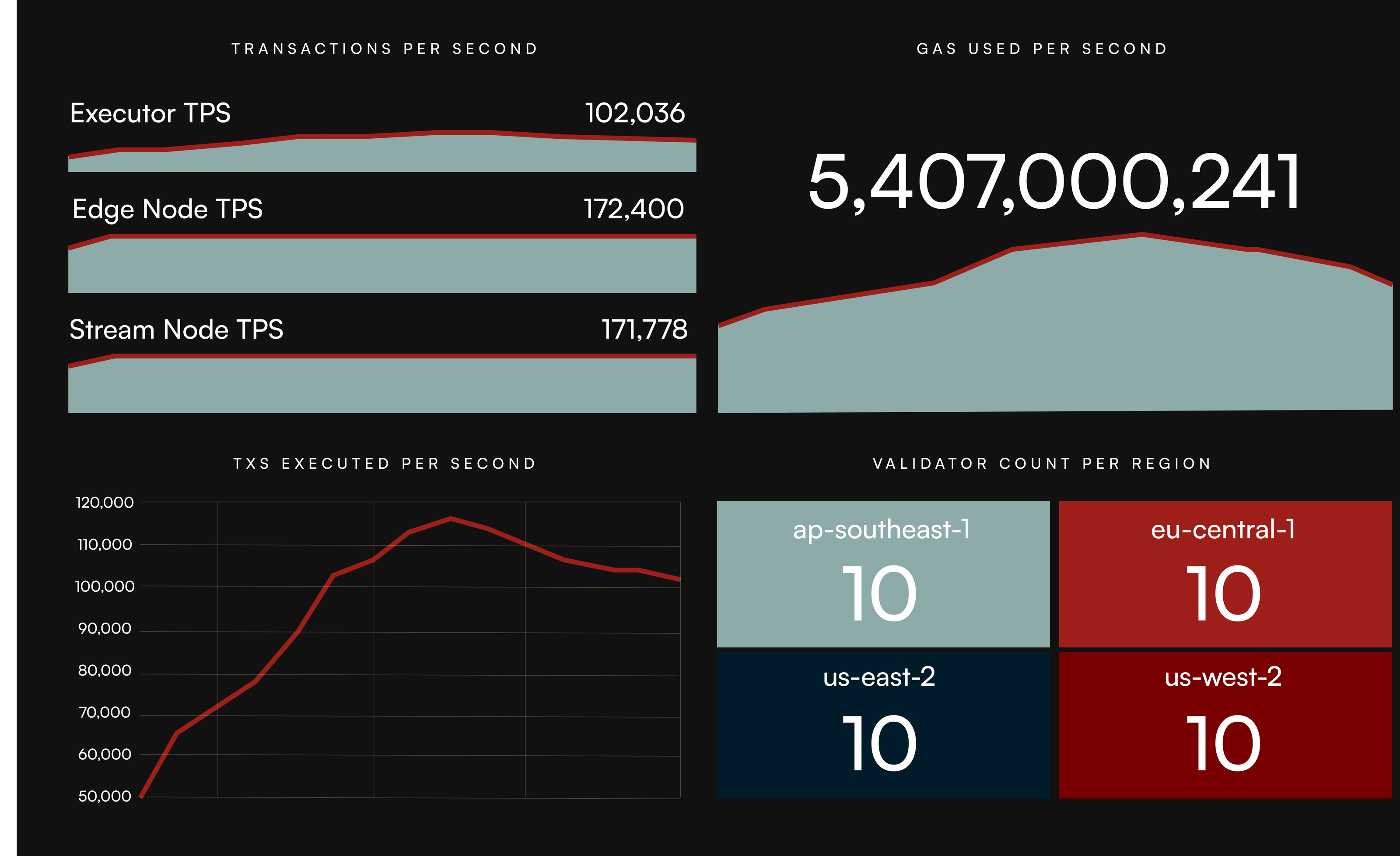
Autobahn Protocol Architecture
Autobahn is a BFT protocol that hybridizes a DAG-inspired highly parallel data dissemination layer with a partially synchronous BFT consensus layer. It aims for low latency under normal conditions and smooth recovery after transient network asynchronies (so-called "hangovers"). Conceptually, Autobahn separates:
- Asynchronous Transaction Dissemination: Similar to Narwhal, each validator broadcasts blocks, obtains a proof of availability (PoA) by collecting partial signatures, and references them in a directed acyclic graph.
- Fast BFT Consensus: A leader periodically proposes a cut of the lane, and validators finalize it via a 2-round PBFT-style protocol (e.g., a HotStuff-like approach).
By the time a block enters consensus, its data has already been made available off the critical path, so the finalization is quick (adding only minimal message delays). Autobahn thus claims high throughput (on par with DAG-based systems) but with faster latency and less post-failure slowdown.
Key Innovation: Off-Critical Path Data Availability
Autobahn's fundamental innovation lies in its approach to data availability verification. By moving this crucial step off the critical consensus path, Autobahn achieves a significant breakthrough in processing efficiency. When a block enters the consensus phase, its data availability has already been verified through the PoA mechanism, eliminating a major bottleneck in traditional consensus systems. This separation allows the consensus process to proceed with minimal additional message delays during finalization, resulting in substantially reduced latency while maintaining robust security guarantees.
How Autobahn Works
The Autobahn protocol operates through a seamless flow of transaction processing and consensus building. Transactions enter the network through edge nodes, where they can be pre-processed into an optimized format. Validators then continuously produce blocks containing these transactions, broadcasting them to the network while collecting partial signatures to create Proofs of Availability. These blocks become part of the lane structure, forming a comprehensive record of network activity. The consensus process is driven by a leader who periodically proposes cuts of the lane. These cuts undergo a 2-round consensus process, with a fast-path optimization that can reduce the commitment to just three message steps under ideal network conditions. This integrated approach ensures both high throughput and rapid finality while maintaining robust security guarantees.
In Autobahn's architecture, each validator maintains their own lane of blocks (represented as cars in the diagram). The system operates with several key components:
- Each validator:
- Maintains a dedicated lane of blocks (visualized as cars)
- Shares these blocks with their peers in the network
- Provides proof of Availability (PoA) to the current leader
- Leader (rotating):
- Periodically creates cuts across the latest blocks from each lane
- Initiates voting rounds for each tip cut
- The tip cut shown in the diagram ( \(<2,2,2,3> \) ) indicates which block from each lane is included
- Block Ordering:
- For any given tip cut, the order of blocks is determined deterministically through the voting round
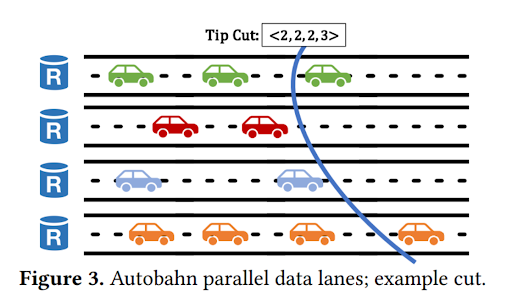
The consensus process follows a structured pattern where:
- The leader (marked with a crown) proposes a cut to all validators
- Validators vote on the proposal
- A certification of available requests (PoA) requires \( f+1 \) votes
- This pattern ensures both safety and liveness in the consensus process
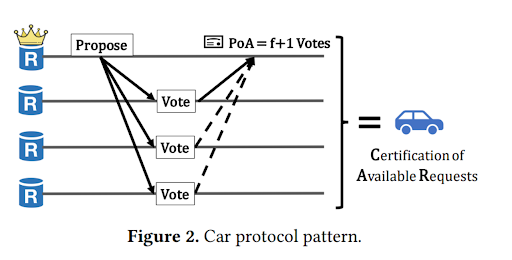
Key Features and Benefits
High Throughput
- Parallel block production by all validators
- Efficient data dissemination through the lane structure
- Optimized consensus path for cut finalization
Low Latency
- Fast-path optimization for ideal conditions
- Data availability verification off critical path
- Efficient recovery from network anomalies
Network Resilience
- Smooth recovery after transient network asynchrony
- Robust handling of validator failures
- Efficient view change mechanism
Modular Design
- Separation of concerns between layers
- Pluggable BFT consensus engine
- Flexible configuration options
Future posts will take you deeper into the technical aspects of our work, exploring implementation details, optimizations, and comparative analyses with other protocols. We'll examine network behavior under various conditions and provide a comprehensive look at our performance analysis methodology.
Join the Sei Research Initiative
We invite developers, researchers, and community members to join us in this mission. This is an open invitation for open source collaboration to build a more scalable blockchain infrastructure. Check out Sei Protocol’s documentation, and explore Sei Foundation grant opportunities (Sei Creator Fund, Japan Ecosystem Fund). Get in touch - collaborate[at]seiresearch[dot]io
References
Neil Giridharan, Florian Suri-Payer, Ittai Abraham, Lorenzo Alvisi, & Natacha Crooks. (2025). Autobahn: Seamless high speed BFT. URL: https://arxiv.org/abs/2401.10369
Sei Research Initiative (2025). Available at: https://sei.io

